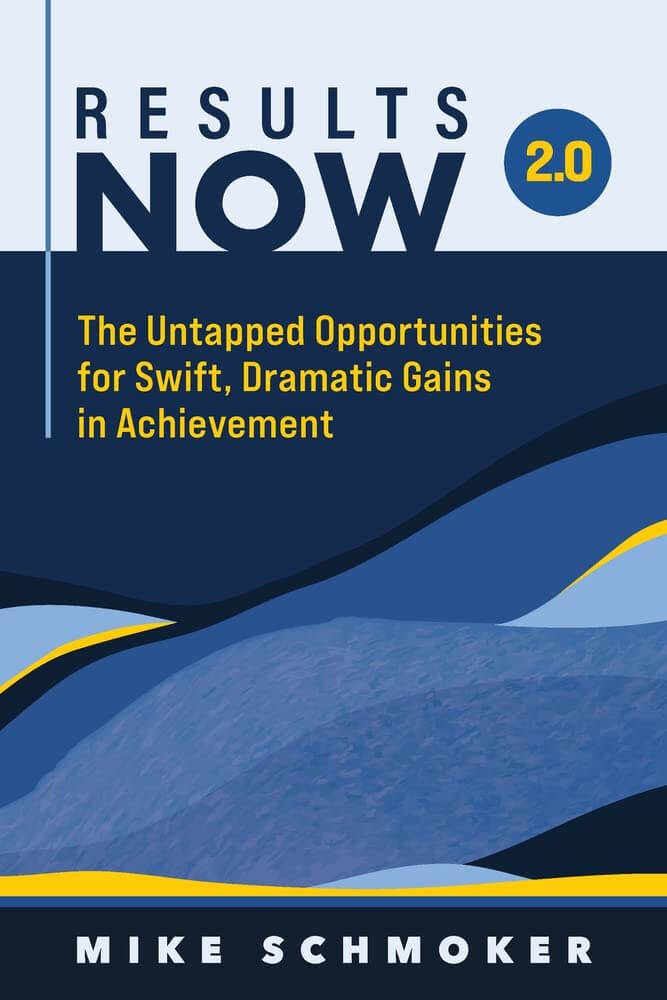
I must admit, I’d become something of an education fatalist.
I know the research about direct instruction. I know the power of a knowledge-rich, well-sequenced curriculum and the promise of school choice. I know that individual schools and even whole charter systems can achieve amazing results. But I always wonder: Is it all for naught?
Ideologically-corrupted colleges of education and their woke professors inundate American schools with terrible ideas. Unions intimidate governors, both Democratic and Republican, away from beneficial legislation. Family backgrounds and general intelligence create seemingly insurmountable achievement gaps. Do such determinative factors confound even the best laid schemes of mice, men, and technocratic education reformers?
In light of that fatalism, I needed to read Mike Schmoker’s latest release, Results Now 2.0, more than the typical education reform book. Schmoker—a former administrator and English teacher who’s written several best-sellers—convincingly provides a definitive “no” in response to my questions.
His survey of the current state of American classrooms provides a glimmer of hope—especially as it pertains to what he calls the “Crayola Curriculum.” Students spend an inordinate amount of time cutting, pasting, coloring, gluing, and glittering. There’s a dismaying lack of reading, writing, and discussion. But precisely therein lies the hope: There’s so much wasted time that minor improvements could garner significant results.
 Displacing the near religious commitment to progressive education in America’s teacher prep programs seems impossible. Reforming the fraying American family is a generations-long project. But replacing hours of aimless activities with little to no educational value? That’s an accomplishable undertaking.
Displacing the near religious commitment to progressive education in America’s teacher prep programs seems impossible. Reforming the fraying American family is a generations-long project. But replacing hours of aimless activities with little to no educational value? That’s an accomplishable undertaking.
We don’t need to convince Jo Boaler to rewrite California’s math framework. We don’t need to replace Paulo Freire with E.D. Hirsch on teacher prep reading lists. We only have to get the average classroom teacher to spend a little less time with coloring worksheets or word searches and more time reading good books together or writing extended responses.
There’s no chance I can get my old professors to take the scales from their eyes and see the errors of their ways. But when I cross paths with my colleagues at the copier printing another cut-and-paste activity, that’s an easier place for reform. To paraphrase a wise wizard, it’s not necessarily “great power” or federal reforms that can keep illiteracy in check, but rather an aggregate of “small things, everyday deeds of ordinary folks” that create the schools that students need.
Schmoker’s book has far more going for it than the fact that it shook me from my fatalistic rut. I’ve been searching for a single resource for people who are looking for an alternative to the dogmas of Piaget and Dewey, inquiry learning and project-based units.
E.D. Hirsch is an obvious first choice, but the length, theory, and tedium can make him a hard sell to busy teachers. Doug Lemov has done the thankless work of turning abstract ideas into much-needed, practical, step-by-step guides, but he won’t convince anyone still committed to progressive education. John Sweller and Paul Kirschner wrote some of the seminal, academic essays refuting unstructured learning, but they wrote just that: academic essays.
Schmoker’s book covers it all: He rebuts faulty theories and practices, covers the research behind structured practice and explicit instruction, and outlines practical policies that teachers, administrators, and policymakers can follow to bring about swift change.
Schmoker’s recommendations are basic but essential. Schools and reformers waste much energy designing gaudy projects, money investing in the latest technology, and time facilitating useless activities. In reality, there’s no occult knowledge to great teaching and learning. Effective instruction isn’t “sexy.” Rather, teachers need to just spend more time on task, clearly modeling procedures, reading books, facilitating structured practice, and requiring extended written responses. We try to “innovate” away from the basics, and our students lose out for it.
Admittedly, perhaps such reform is achievable because the bar is so low already and there’s simply so much wasted time. He gives countless examples of schools that skyrocketed their scores within a year simply by encouraging daily writing. When students spend more time with crayons than books, the return on investment of even the smallest of adjustments will be large.
If there’s any flaw in his book, it’s the lack of discussion of behavioral expectations and consequences. I worked in a school that had a great curriculum and at least espoused a belief in teacher-led instruction, but all was for naught because the school couldn’t maintain basic order. Behavioral policies are primary to curriculum and instruction. But I doubt Schmoker would deny the importance of classroom or school management, and his eschewal of this topic is simply because every author can’t address every topic in every book.
Ultimately, we overcomplicate education reform to our own peril. In his own words:
We should remind teachers that their lessons need not be particularly elaborate or complex. Teachers can build them around versatile (but underappreciated) routine academic activities such as close reading, note-taking, discussions, and writing prompts about content…. Done right, these activities never become dull. Curriculum built around this core simplifies lesson planning and powerfully promotes students’ intellectual and expressive capacities.
It’s a simple vision for our schools, but it’s powerful precisely because of its simplicity.
Daniel Buck is a teacher, senior visiting fellow at the Fordham Institute, and author of the book What Is Wrong with Our Schools?
This post originally appeared on the Fordham Institute’s Flypaper blog.


